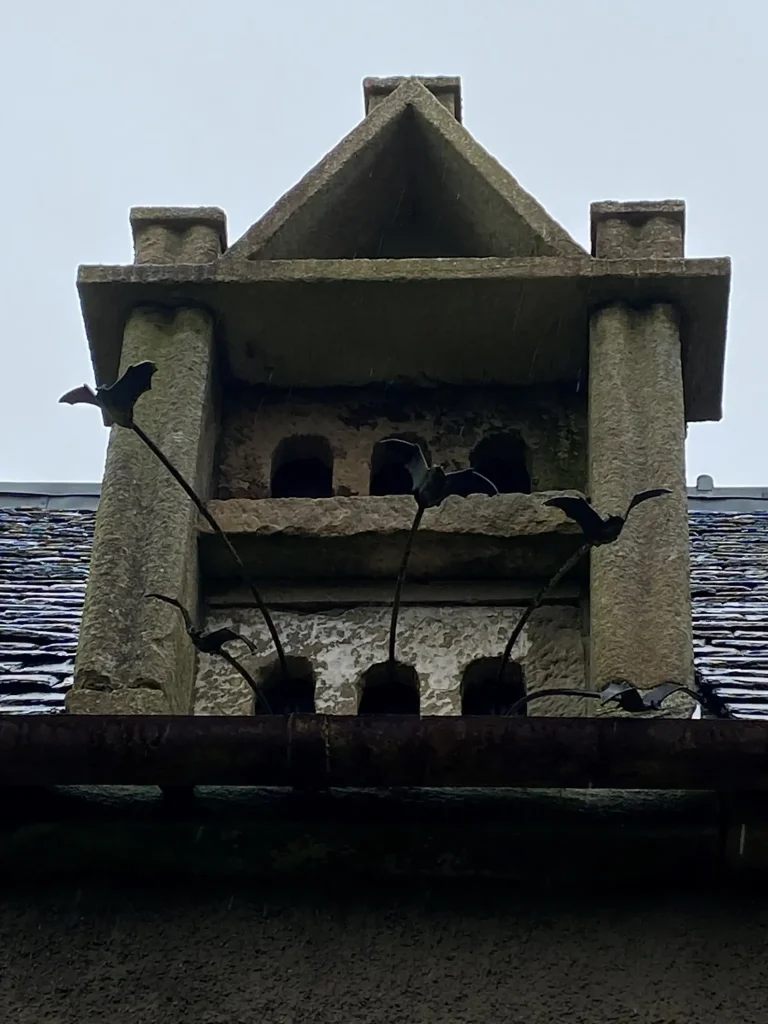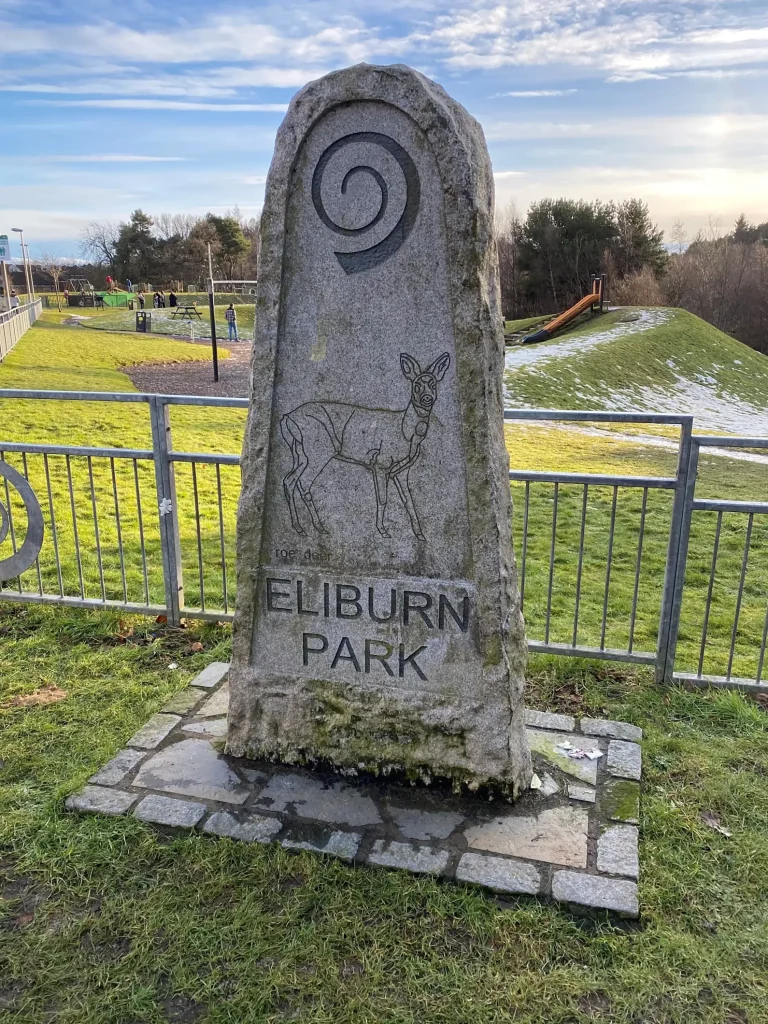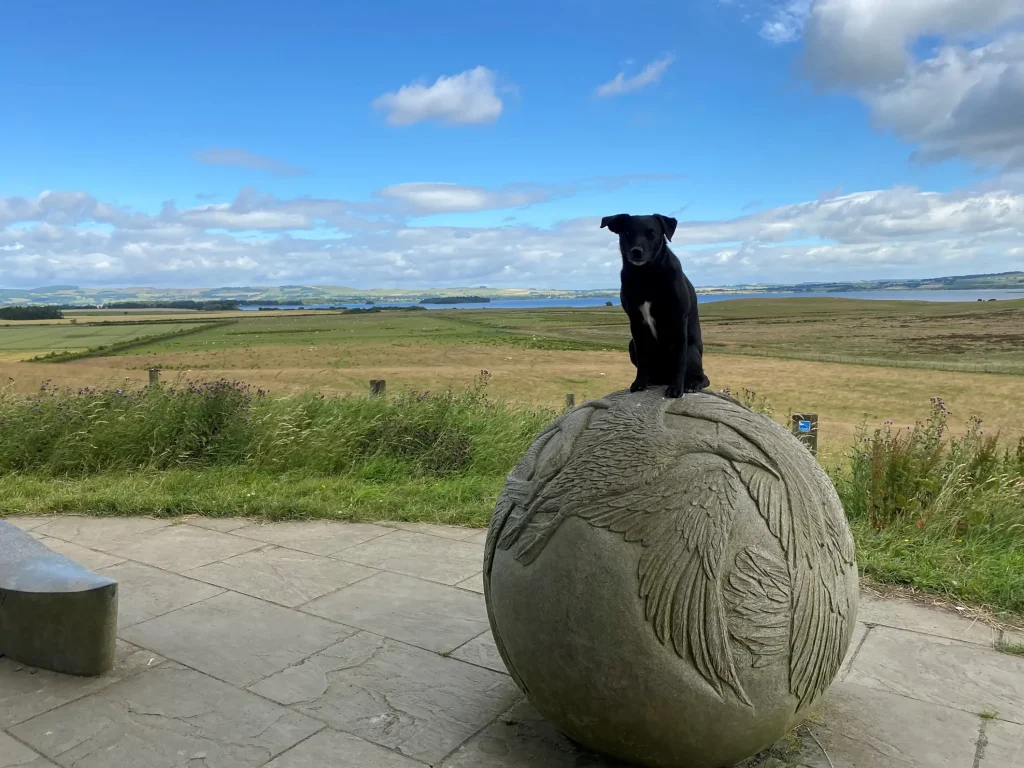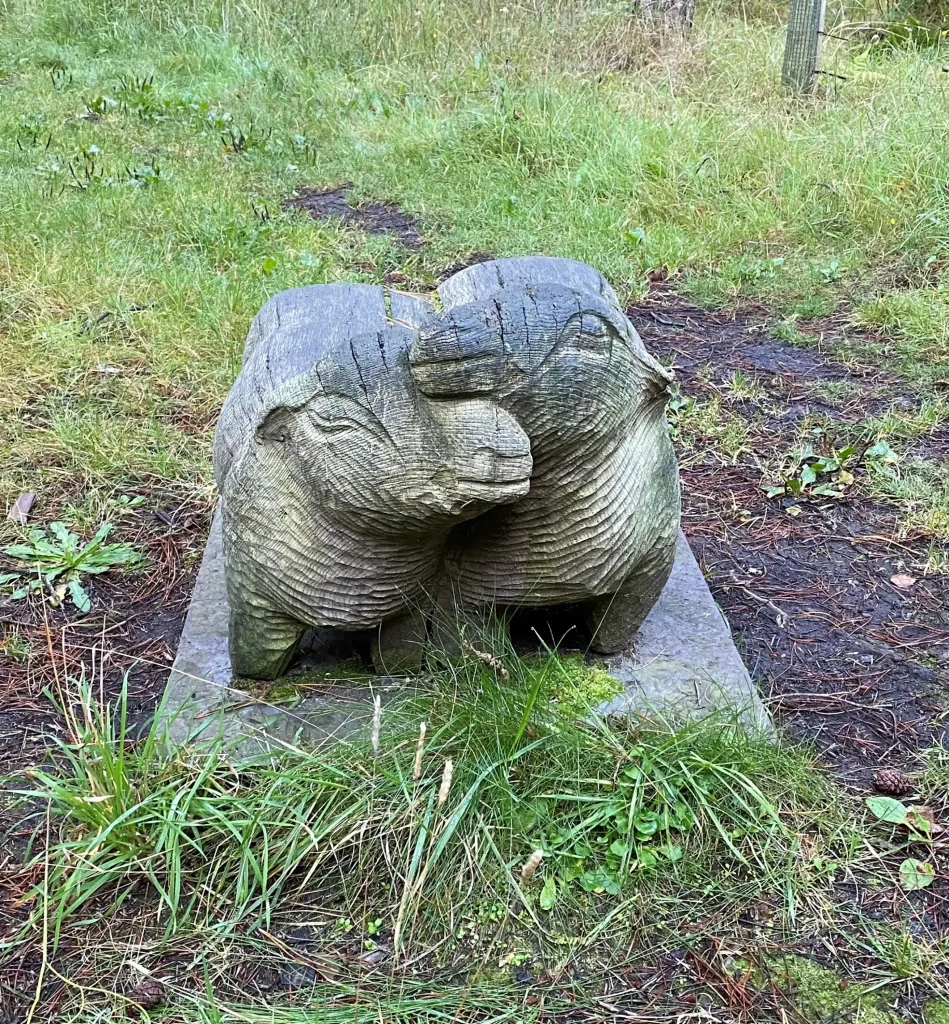Nothing clears away the cobwebs of the festive period like a walk in the woods. It was on a particularly wet and drizzly walk at Muiravonside Country Park that I stumbled upon a real treat, which made me stop and think about art and nature. Tramping the muddy path (with dog in tow) from the bottom car park, I passed the horses and goats huddled in their fields. I planned to make my way to the main building complex for a loop around and a quick walk back to the car out of the rain. I do love an old building though, so I lingered for a few minutes admiring the stonework and the quaintness of the courtyard when then my eyes were caught by a familiar sight. Bats! In December!

But no, these bats were a charming example of public art – an art piece Installed to enhance visitor experience and add features of interest. Muiravonside is full of examples sculptures depicting wildlife and crafted from natural materials, but this piece in particular really captured my imagination.
In Scotland, we have our fair share of eye-catching pieces of public art inspired by nature. From prominent artists such as Andy Scott with his iconic stags, bears and mythical creatures (not to mention his heavy horses). To more local examples – a public park sign depicting a roe deer carved into a granite, which always catches my eye. A popular destination for outdoor “nature” art is Jupiter Art Land Sculpture Park and I even stumbled upon the sculpture trail tucked away in Dunnet forest, on a visit to Caithness last year.

I have a real soft spot for public art and sculpture – my first attempt at higher education was down the artistic rout – but I also believe it is a very accessible forum for evoking real connection and engagement to the natural world, even more so than it’s wordy cousin – Interpretation. It transcends language, background, academic ability and Neurodivergence providing a platform where we can all meet and experience on a level plane.
The Scottish Household Survey 2019 (2012 – 2019) is a report which was produced by NatureScot (previously SNH) providing statistics on public engagement with nature and the outdoors between 2012 and 2019. The report shows that during this period, between 42% and 59% of adults in Scotland said that they visited the outdoors on a regular weekly basis; with recreational walking being the most popular activity. The report also reveals that this percentage drops to between 32% and 41% in deprived areas.
NatureScot produced a further 3 reports during the COVID lockdowns, which indicating a sharp rise in the number of people enjoying the outdoors (averaging 71% of people walking locally at least once a week – SNH Research Report 1198: The Scottish Nature Omnibus 2019)

This was a fact very apparent to most of us during that time – the increase in people everywhere. Once quiet walking areas were busy and queues at the top of Ben Nevis made it clear that more people were out and about, enjoying nature.
This flux has dipped slightly but evidence gathered suggests that a high level of engagement in the outdoors has been sustained.
What is clear from the data, however, is that our historical baseline is a general lack in regular time spent outdoors with a deficit of people from deprived backgrounds accessing and engaging with nature. COVID provided an interesting anomaly, establishing an opportunity for people to reconnect with outdoors, which will hopefully continue.
It is recognised that regular access to outdoor spaces and time spent in nature is a benefit to mental and emotional health, not to mention providing opportunity for exercise. As well as the immediate health benefits, re-establishing this link to nature and the environment provides the opportunity to increases engagement with environmental topics such as renewable energy, climate change and living more sustainably. Topics high on the Government agenda at the moment.
Many people living in towns and cities rarely get to experience the encounters with our wildlife that we do working in the ecology sector. Public art capturing nature provides opportunities for this connection and a tangible glimpse into a world which is hidden for a lot of people.

The Muiravonside bat sculpture made me think of times when I have carried out a dusk or dawn bat survey, and the excitement of an emergence, or the discovery a large colony. It made me think of a time, when I would not have been aware of my proximity to bats or their habits and why they are so fragile and in need of legal protection. Now the first thing I think of when I see an old building is looking for potential for bats to be roosting. Seeing this sculpture reconnected me with these feelings and made me think of the tiny sleeping bodies within this old building, hidden from view waiting for the spring to emerge, under cover of night.
The connection to nature which public art can provide, is a benefit to us all; a point of access to spending time in the natural world that some people may find it a challenging to do; enhancing engagement with the environment and wildlife that can spark and interest in global environmental Issues that we all have a part in; awareness of the fragility of our more secretive and misunderstood native species and most importantly, it is a celebration of creativity and the beauty that we as humans on this earth can choose leave behind as our legacy, instead of pollution, refuse and depleted ground.
By Georgina Ord, Assistant ecologist.

